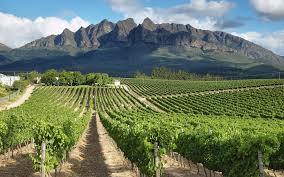Most people think of the same handful of places when it comes to wine. A few names dominate shop shelves and travel brochures. Yet the story is much wider. Vineyards exist in regions where outsiders rarely expect them, and some of these places are producing wines that carry a sense of history and local identity that doesn’t always reach international markets. Discovering them can be compared to stumbling into a hidden strategy in the mines game online—you don’t see the value until you uncover it step by step.
Why Lesser-Known Regions Matter
Global trade shapes which wines we see in restaurants and stores. Distribution networks, export deals, and marketing budgets all favor the familiar names. But if you stop at what’s easy to find, you miss a large part of the picture. Smaller regions often maintain grape varieties that are rarely planted elsewhere. Some have continued methods passed down through families, less influenced by global trends.
There is also a simple geographic point: climate change is shifting what areas are viable for vineyards. Regions that were once marginal are now gaining ground, while some established names struggle with rising heat and unstable weather. Paying attention to overlooked regions gives us a glimpse of where wine might be headed in the future.
Central and Eastern Europe: History Reemerging
For centuries, Central and Eastern Europe had strong wine cultures. Wars, shifting borders, and centralized economies limited their reach beyond local markets. Since the 1990s, the region has been opening back up, and many countries have begun exporting again.
A visitor quickly notices that vineyards here are not just businesses—they are often linked to villages, monasteries, or farming collectives. Indigenous grape varieties, nearly wiped out by uniform farming under state systems, are being replanted. For travelers, tasting these wines is less about comparing them to famous labels and more about seeing how history, politics, and agriculture intertwine.
Mountain Vineyards and the Role of Altitude
High-altitude vineyards are an example of geography reshaping expectations. Grapes grown at altitude develop differently because of the strong contrast between daytime sun and cool nights. The result is not only a matter of flavor but also of how vines adapt to stress.
What’s interesting here is not just the wine but the reason these vineyards exist at all. In several countries, farmers moved vines higher up slopes to escape pests, reclaim neglected land, or respond to warmer lowland climates. For visitors, these vineyards are often found near hiking routes, remote villages, or ancient terraces, making the journey as memorable as the tasting.
Islands and Coastal Lands
Wine grown on islands or near harsh coastlines tells another story. Isolation meant that local varieties survived longer here than on the mainland. Volcanic soils, wind exposure, and limited water shaped both the vines and the people cultivating them.
In some island regions, vines are trained close to the ground or woven into basket-like shapes to withstand the wind. These methods are not just curiosities; they are evidence of how human communities adapt agriculture to extreme environments. Travelers who come to these regions often combine wine visits with fishing harbors, historic ports, or maritime traditions that go back centuries.
Southern Hemisphere Beyond the Mainstream
When people think of the Southern Hemisphere and wine, only a few countries come to mind. But the southern half of the globe is filled with varied landscapes, and many small regions are now experimenting with vineyards.
These places don’t always have centuries of tradition, but that can be an advantage. Winemakers can take risks without worrying about rigid rules. Some work with international grape varieties; others try to revive plants that once grew wild. For visitors, this means fewer polished tasting rooms and more opportunities to meet producers directly. The focus is often on experimentation and finding out what the land can sustain, not on matching global taste trends.
Climate Change and Adaptation
The future of wine is tied to climate. Established regions face growing challenges with water shortages, unpredictable seasons, and disease pressures. Some lesser-known areas, by contrast, are naturally positioned to adapt—higher altitudes, coastal breezes, or cooler microclimates give them resilience.
These regions are also experimenting with practices that reduce reliance on heavy irrigation or chemical input. Small-scale producers often have flexibility to test new methods, from organic approaches to collective sharing of resources. For visitors, exploring these regions is also a chance to see agriculture adjusting to a changing planet.
What Travelers Gain
Visiting less familiar wine regions is not only about tasting. It’s about connecting the drink to the place, the soil, and the people who maintain it. Unlike the crowded tours in famous areas, smaller regions often give space for longer conversations with growers. The wine becomes a window into local food, traditions, and landscapes.
For many, this kind of travel carries more meaning than ticking off well-known spots. It offers the chance to learn how different societies adapt one of the world’s oldest crafts to modern realities.
Conclusion
The global map of wine is far larger than what labels suggest. By exploring regions outside the spotlight, we gain a fuller picture of how wine reflects geography, history, and adaptation. Some of these areas are reviving ancient practices, others are experimenting with new techniques, and together they show that the story of wine is always expanding.
For anyone who values discovery, these regions offer more than just bottles to taste. They offer lessons about resilience, culture, and the future of an industry often assumed to be unchanging.

